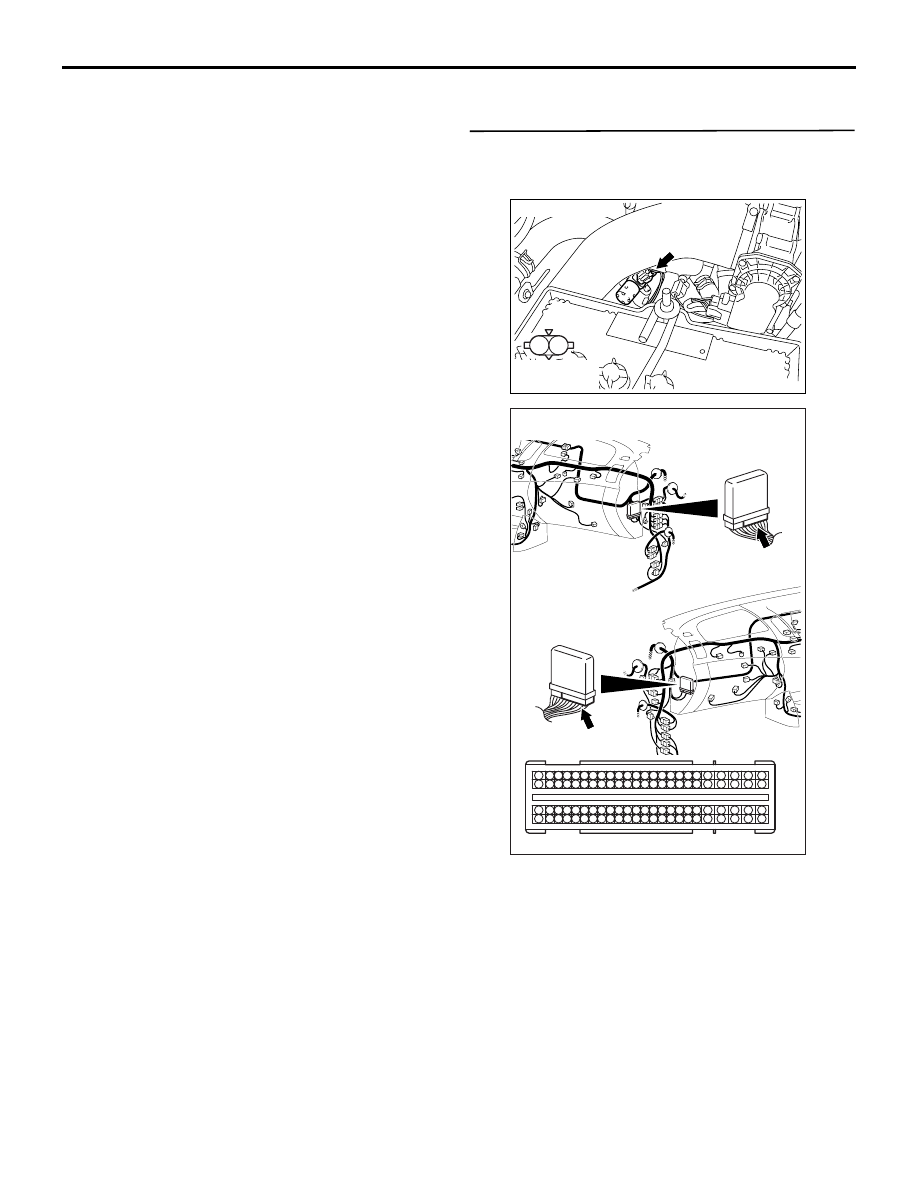Mitsubishi L200. Manual - part 61

TROUBLESHOOTING
DIESEL FUEL
13A-40
FUNCTION
• The variable geometry control solenoid valve
controls the vacuum pressure introduced into the
variable geometry actuator, using the signal from
the engine-ECU. This allows the boost pressure
to be adequate for the driving conditions.
TROUBLE JUDGMENT
Check Conditions
• Battery positive voltage is 8 − 16 V.
• 2 seconds later after the engine has started up.
Judgment Criterion
• Variable geometry control solenoid valve output
voltage is 4.5 V or more (driving current is abnor-
mally high).
PROBABLE CAUSES
• Short circuit in variable geometry control solenoid
valve circuit or loose connector contact
• Failed engine-ECU
DIAGNOSIS PROCEDURE
STEP 1. Connector check: A-56 variable
geometry control solenoid valve connector, C-
105 engine-ECU connector
Q: Are the check results normal?
YES :
Go to Step 2 .
NO :
Repair or replace the connector.
AK900982
2 1
AC
A-56 (BR)
Harness side
connector
Connector: A-56
AKA00089
1
2
3
4
5
6
7
8
9
10
11
12
13
14
15
16
17
18
19
20
21
22
23
24
25
26
27
28
29
30
31
32
33
34
35
36
37
38
39
40
41
42
49
50
51
52
53
54
55
56
57
58
59
60
61
62
63
64
65
66
67
68
69
70
71
72
43
44
45
46
47
48
73
74
75
76
77
78
79
80
81
82
83
84
85
86
87
88
89
90
91
92
93
94
95
96
C-105 (B)
C-105 (B)
<R.H. drive vehicles>
Harness side connector
<L.H. drive vehicles>
Connector: C-105
AB